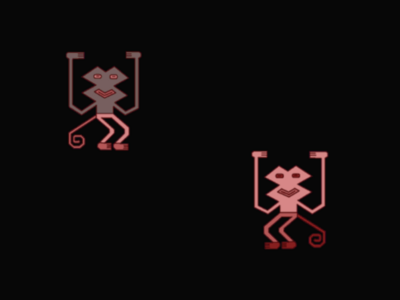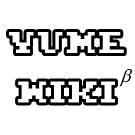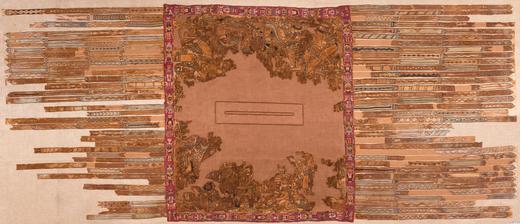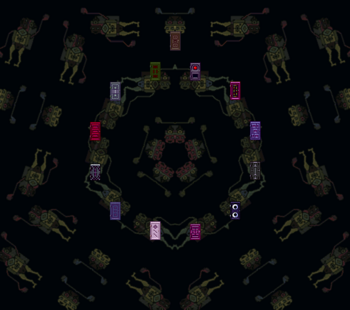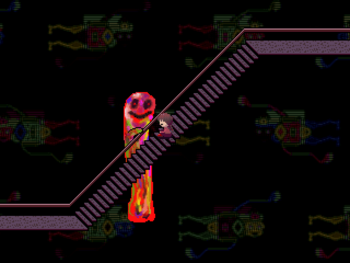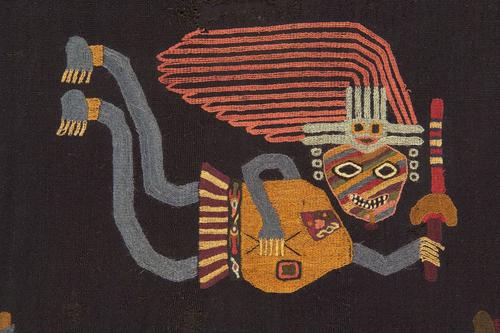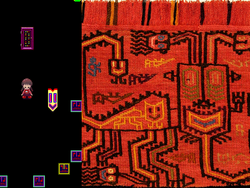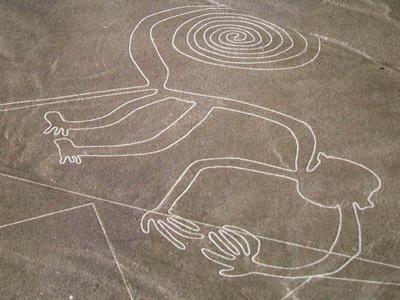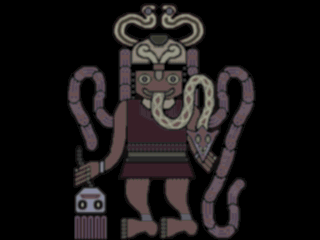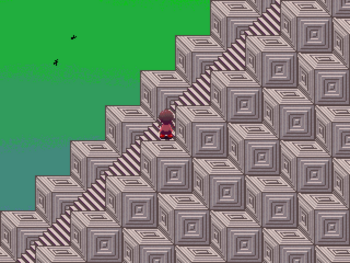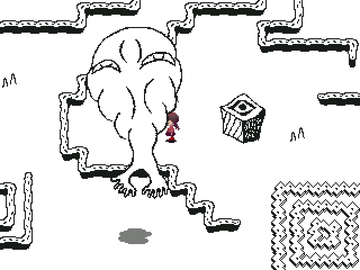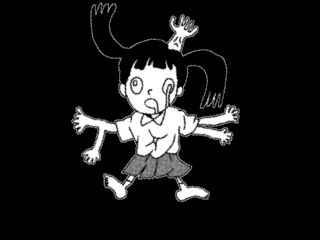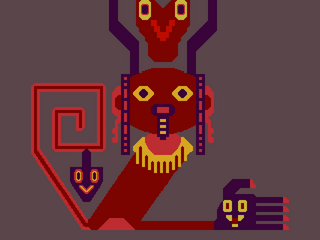
One of the most noteworthy visual themes in Yume Nikki is that of Indigenous imagery. While it is up to speculation as to whether or not these cultures that are displayed so prominently alongside Japanese culture have any significance, there exist many theories as to how this could relate to the characters and the overarching message and themes of the game.
Some prominent examples are the Aztec Rave Monkey (which appears many times in backgrounds and its own event) and the KALIMBA that appear in Madotsuki's Room, which even has a similar design to her carpet.
Paracas culture
While many fans have speculated that these themes are Aztec, it has often been instead suggested that the imagery in Yume Nikki more closely resembles artwork from the ancient Paracas civilization of modern-day southern Peru. This Andean society lived from around 800 BC to 100 BC, and made significant works using textile-art as they had wide knowledge of water management. This art extended to their process for funerals: wrapping up their deceased and offerings in stylized embroidered cloths. Their art style can be seen many times in the game itself.
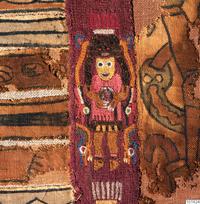 A close-up of the left image, showing a figure similar to Madotsuki. |
"Flying man" figures also appear throughout the game, as they are a common motif in Paracas burial textiles. The background of the Neuxs uses both heads and full figures. Number World also has this design in the stairway located behind a Zippertile.
It should also be noted that one of the Neon Creatures bears a striking resemblance to some creatures found on Andean textiles, particularly mantles made in the Paracas culture. Extending to both Andean culture and Neon World as a whole, some of the structures found there as well as the grid-like face patterns that make up the world's floor resemble various textiles made by native people of the Andes. The colorful nature of Neon World and this apparent Andean inspiration may also be inspired by the Template:WP, an emblem used to represent native people of the Andes.
In ancient Peruvian cultures such as these, dreams had high significance in that they can be spiritual events that, when finished, caused the dreamer to learn something about themselves. It is possible that these themes were chosen by KIKIYAMA as a way to represent Madotsuki's mind as if she were doing the same.
Nazca culture
Directly proceeding the Paracas were the Nazca, another ancient Peruvian society that shared many similarities in terms of their art and culture. These people lived from around 100 BC to 800 AB in the Ica Region.
Although the Aztec Rave Monkey is often labeled as a representation of Aztec culture, many fans have said that the character more closely resembles line drawings made by Nazca civilizations. Dreams often played a significant role in this culture as well, which further continues the comparisons between these civilizations and a possible greater meaning to the game itself.
One common motif in Nazca art is the appearance of decapitated heads, also known as trophy heads. They are most notable for their appearance in Nazca ceramics and were believed to be used for religious rituals or agriculture. The most notable appearance of decapitated heads in the game is the Severed Heads, which may also be related to the Henkei Shita, who resemble headless bodies. One other instance is the background in Eyeball World, which presents itself as a being holding a person's head. One common modification made to the severed heads was a rope hole going through the forehead, which may explain the snake- or intestine-like object that the being also wields. It should also be noted that another severed head appears in the same world.
Aztec culture
Another culture that seems to be represented in the game is that of the Aztecs, a Mesoamerican culture that lived from 1300 to 1521. It should also be noted that this is the only true Mesoamerican culture that appears to be represented in the game.
One of the most well known aspects of Aztec culture is their religious sacrifices. These sacrifices were made to deities as way of thanking them for continuing the circle of life, usually with offerings of food, animals, and humans. These rituals often took place at the top of pyramids during ritual festivals, which were considered temples or places of worship as well as homes for the many deities the Aztecs worshipped. In Yume Nikki, pyramids appear in various locations. These include the Checkered Tile Path, the Wilderness, the Neon Tile Path, and FC World B. The Falling Man event also appears to be associated with these sacrifices, as the bodies of human sacrifices appear to have been thrown or tumbled down the pyramid temple stairs as seen in Aztec art and documentation. Another aspect associated with this appears to be the severed head motif, which is detailed above in the Nazca culture section.
African culture
Although to a lesser extent, African themes have also been noted by fans of the game, although these ones are more in the form of the soundtrack. The sound design of the game is known for its often weird sounds, whether this be in the form of the droning, looping music, or the strange ones that many characters make upon interaction. Among these, it is not uncommon to come across tribal-like beats.
The KALIMBA TV Channel event is one of the most common examples, as the song features a kalimba as its main instrument. The kalimba is an instrument modeled after the mbira, an African lamellophone.
Two notable examples appear in the White Desert, which are associated with characters found there. One can be heard with Takofuusen, who randomly appears across the screen and is accompanied by one of these beat-like sounds. Another is Monoko, who starts a full-screen event accompanied by a similar, repetitive beat when the Stoplight effect is used near her.
Another character that makes a similar noise is the Fisherman, who is found in Windmill World. The Lizardmen also have faces and colors reminiscent of traditional African tribal masks. In YUMENIKKI –DREAM DIARY–, the player obtains a kalimba from one of the Train Passengers after playing a melody on the Flute.
Interpretation
It can be interpreted that Madotsuki herself feels as though she is connected with these cultures and their wide interpretations of dreams, as she has items in the real world that even resemble their art, particularly her carpet. As mentioned before, the significance of dreams in these ancient civilizations and their beliefs may tell of a deeper context of the game.
Since dreams would often represent sicknesses and the deepest feelings and essence of a person, the ones that Madotsuki faces are not as weird as they are her coming to terms with her own fears. This could be why they are as strange as they are, since what they really represent is a sort of "cleansing" of her mind of these harmful thoughts.
Another theory is that Madotsuki herself is a Template:WP, explaining both motifs from South American and Japanese culture.
